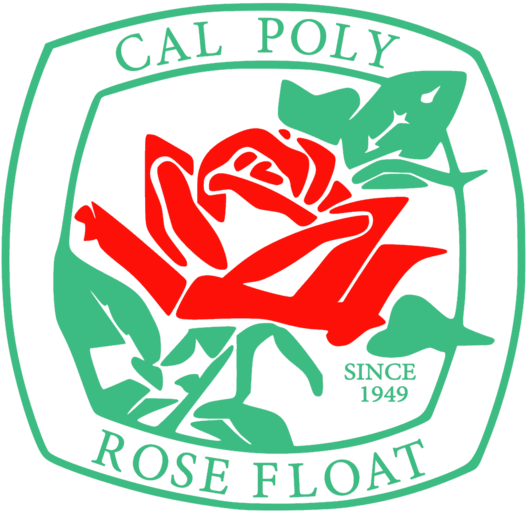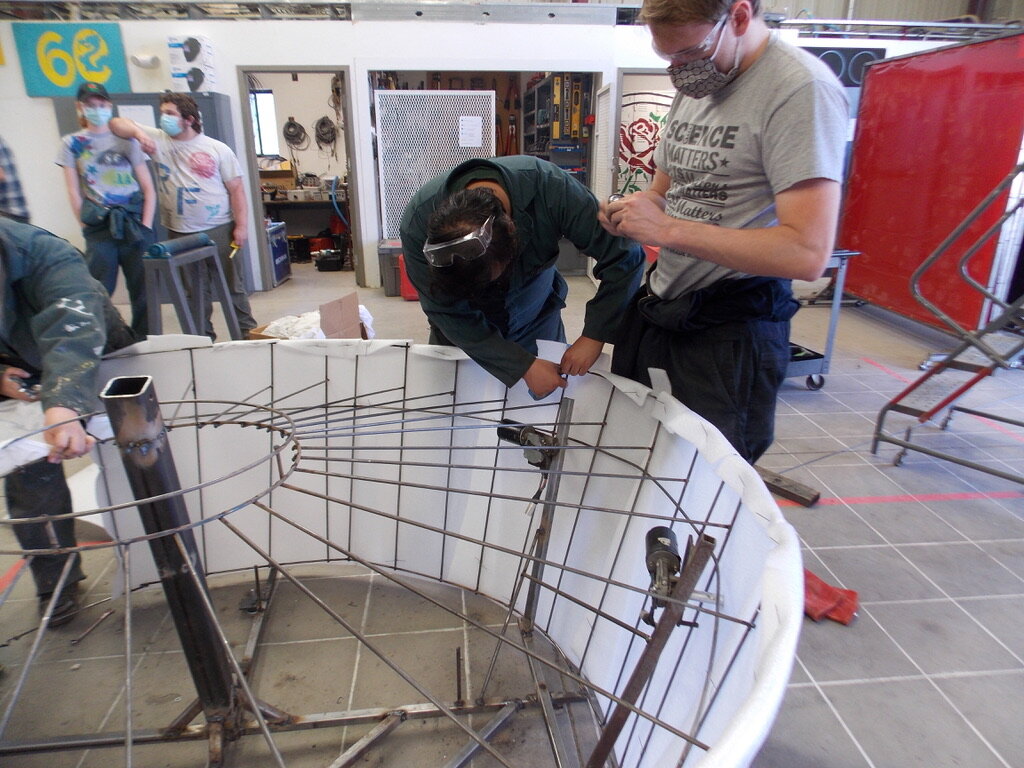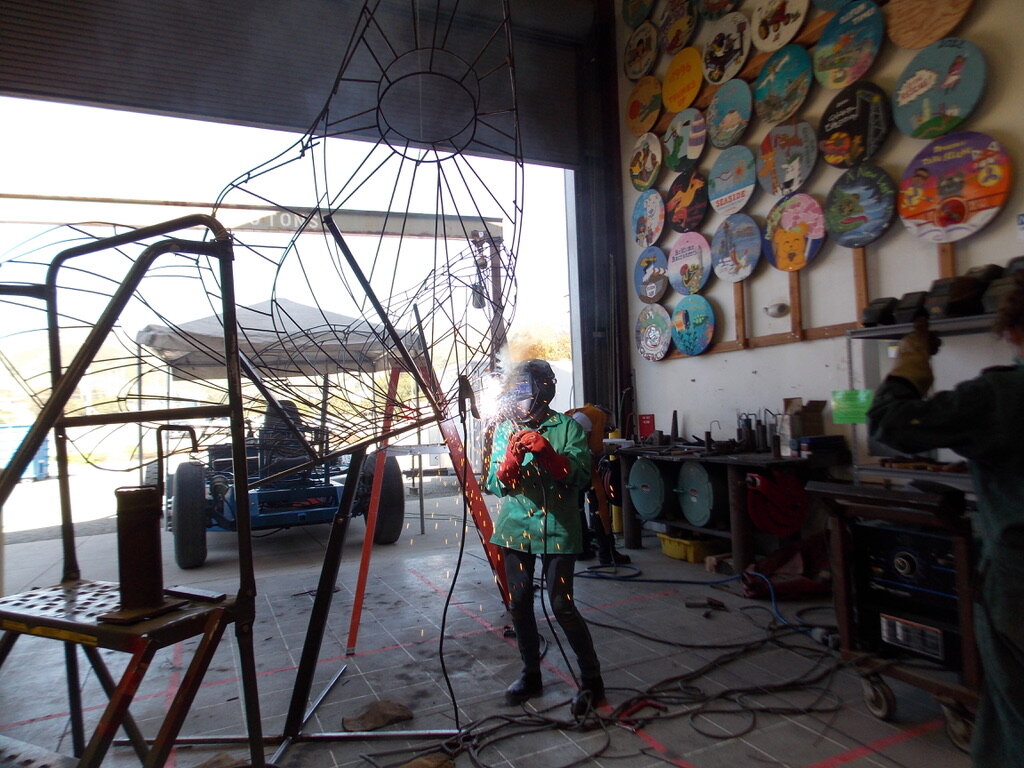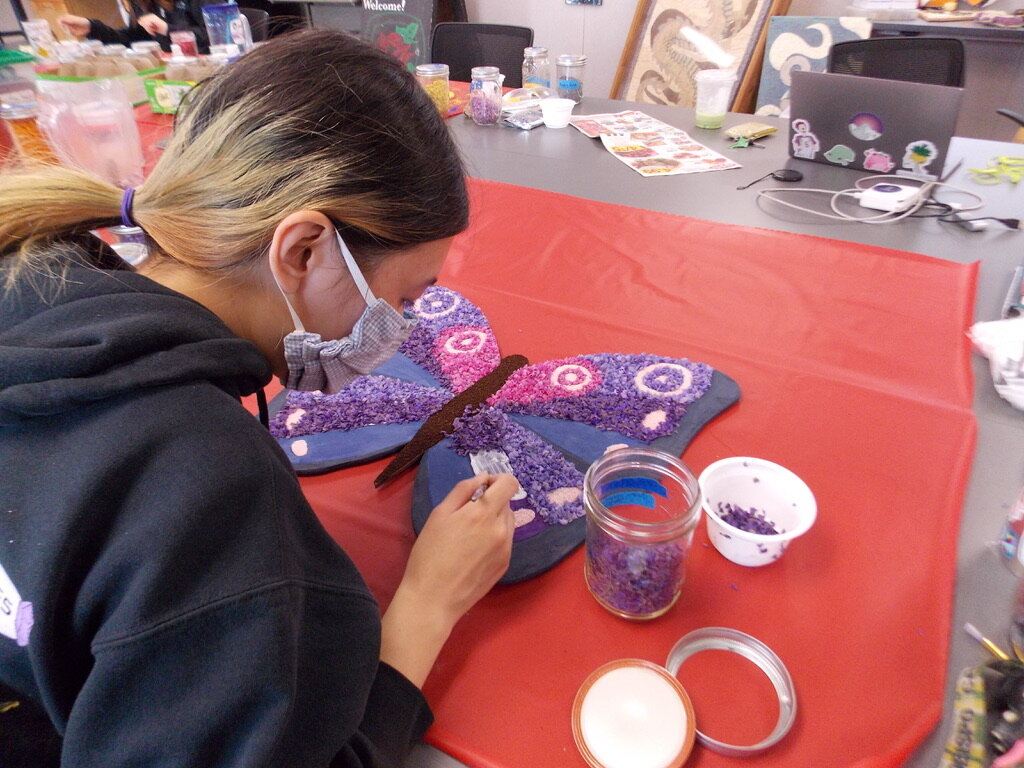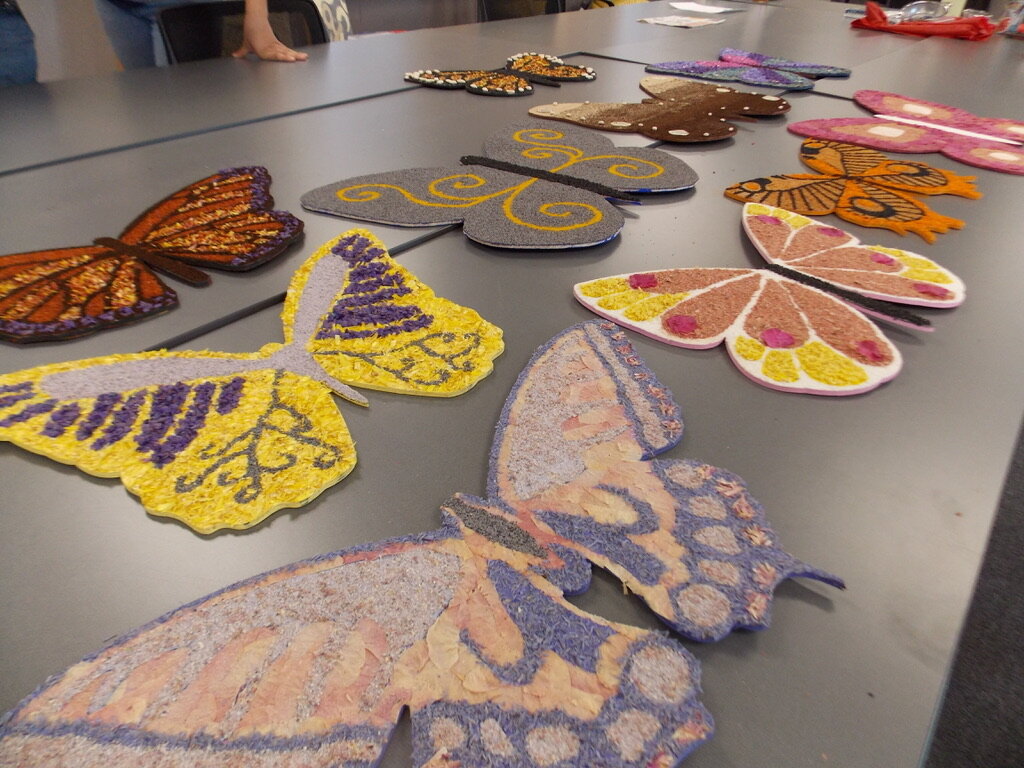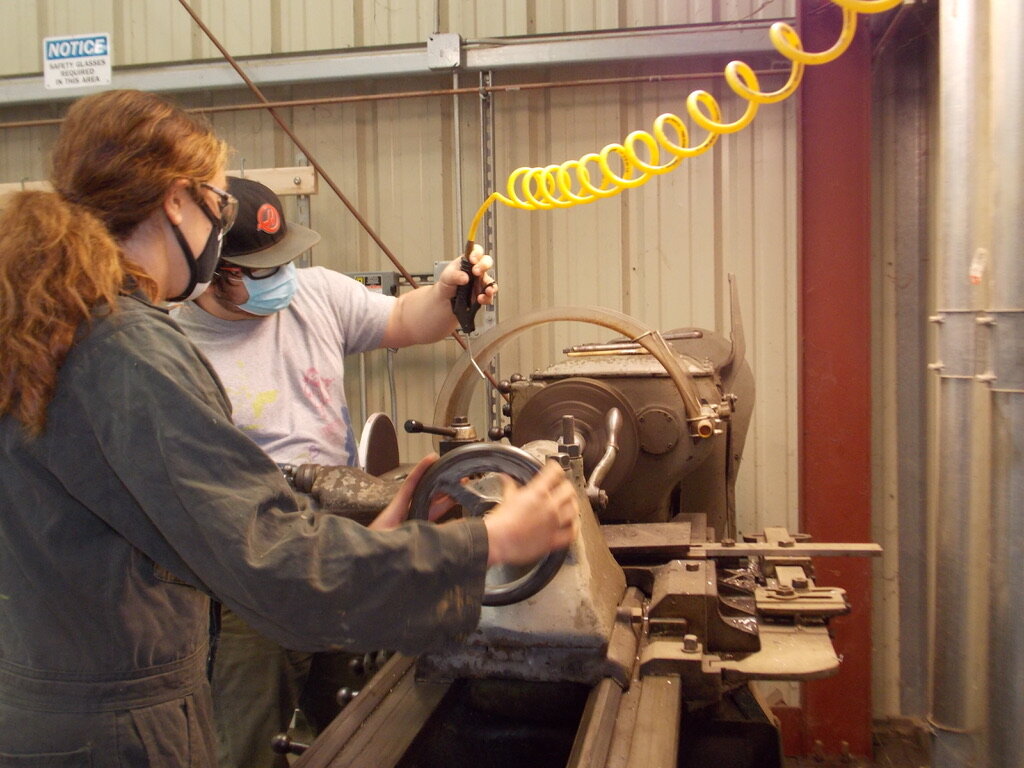MAY FLOWER INITIATIVE
Cal Poly San Luis Obispo Presents:
Spring Wings
Video by C.J. Nartia (Rose Float 2020)
Spring Wings, the SLO team’s contribution to the May Flower Initiative, will be displayed in Mission Plaza in Downtown San Luis Obispo over three weekends.
The May Flower Initiative, a city-wide art project put on by Downtown SLO, is meant to promote local love and community, and our Rose Float team was ecstatic to be invited to participate.
Our Process
In late March, the Rose Float leadership team sprang into action! We decided to tell a story of resurgence and change, represented by an installation featuring a garden display centered around a giant butterfly poised to take flight.
With spring in the air, our teams began to design and build our piece.
The team has been extraordinarily motivated. The leadership team was nothing short of ecstatic to get back to building and working. We have returned to our usual practices: working, building, problem solving, making mistakes, unbuilding, and problem solving again.
Our first installment, premiering on May 8th, represents the initial phase of the story. The piece will highlight particularly the work of our construction team, showing the structural supports made of steel, as well as moving mechanisms.
Cal Poly Rose Float consists of three teams: Construction, Design, and Decoration.
Construction
During a regular float year, the Construction team works on all the moving parts of the float, making sure that the drive engine, animations engine, and mechanisms are working well. What construction works on is hardly ever visible (you don’t see any steel when the float goes down the parade route) but it is vitally important to the structural integrity and motion of the float.
The Construction team built the lever arm that hoisted our submarine 25 feet above the parade route for our Aquatic Aspirations 2020 float. They also designed the mechanisms for the waving octopus and spinning jellyfish.
For the May Flower project this team is building structural supports, including a detachable frame for the large butterfly so that it can be modified as the week progresses. Construction has also worked on moving mechanisms like the flying bee, and several other elements that will be unveiled in time.
Using a machine called a lathe to carve circular parts
Building the Bee Mechanism
Welding the mechanisms to the flower pot
Successful test of the Bee Mechanism
Design
During a regular float year, the Design team decides the overall look and feel of the float, as well as shaping the elements, such as the turtles, fish, and jellyfish from Aquatic Aspirations or the large butterfly you can see in Spring Wings. Design’s work is mainly in pencil steel and foam, but the team also works with Construction and Decorations in order to make sure our float displays the story we are trying to tell.
For the May Flower project this team designed the overall look of the piece. They made models and drawings of the butterfly and flowerpot, deciding things like dimensions and scale. After the models were finished, the design team used pencil steel to shape the wings of the butterfly. They cut out wooden shapes for the bee and used foam to make the top of the pot.
Using the cutoff wheel to make the flower pot
The butterfly wings
Using bed sheets to cover the steel in preparation for the foaming process
Using foam to fill in the top of the pot
decoration
During a regular float year, the decorations team is in charge of all the natural material on the float. For a float to be in the Rose Float Parade, every square inch of it must be covered in natural material. The decorations team decides which materials to use for each element, matching both color and texture to the idea the team wants to convey. The decorations team used dry material to convey the texture of the sand as well as many underwater creatures on the Aquatic Aspirations float. They also put more than 10,000 roses, daisies, and irises in vials in order to cover the deck of the float.
For the May Flower project the team has worked on using special deco techniques to create intricate designs on the butterflies, which are now hanging around the archway and photo frame. They have used beans, powders, and the petals of delicate flowers to convey the bright colors of butterflies. The Deco team has also planned the overall color palette for the piece, as well as decided which parts will have dry material and which parts will have fresh plants and flowers.
Chili powder and bronze stawflower
Painting the spinning flowers and butterflies
Chili powder and onion seeds
Decoding the spinning flowers
The Rose Float departments work closely together and many elements are a collaborative process between all three teams.
All three departments worked on the flower pot and butterfly
Making the butterfly stand
Welding the butterfly wings
Looking for our installation?
It’s on display at Mission Plaza in downtown San Luis Obispo!
Are you a Cal Poly SLO student interested in Rose Float?
Sign up to join our email list here
(Scroll to the bottom of the page!)
